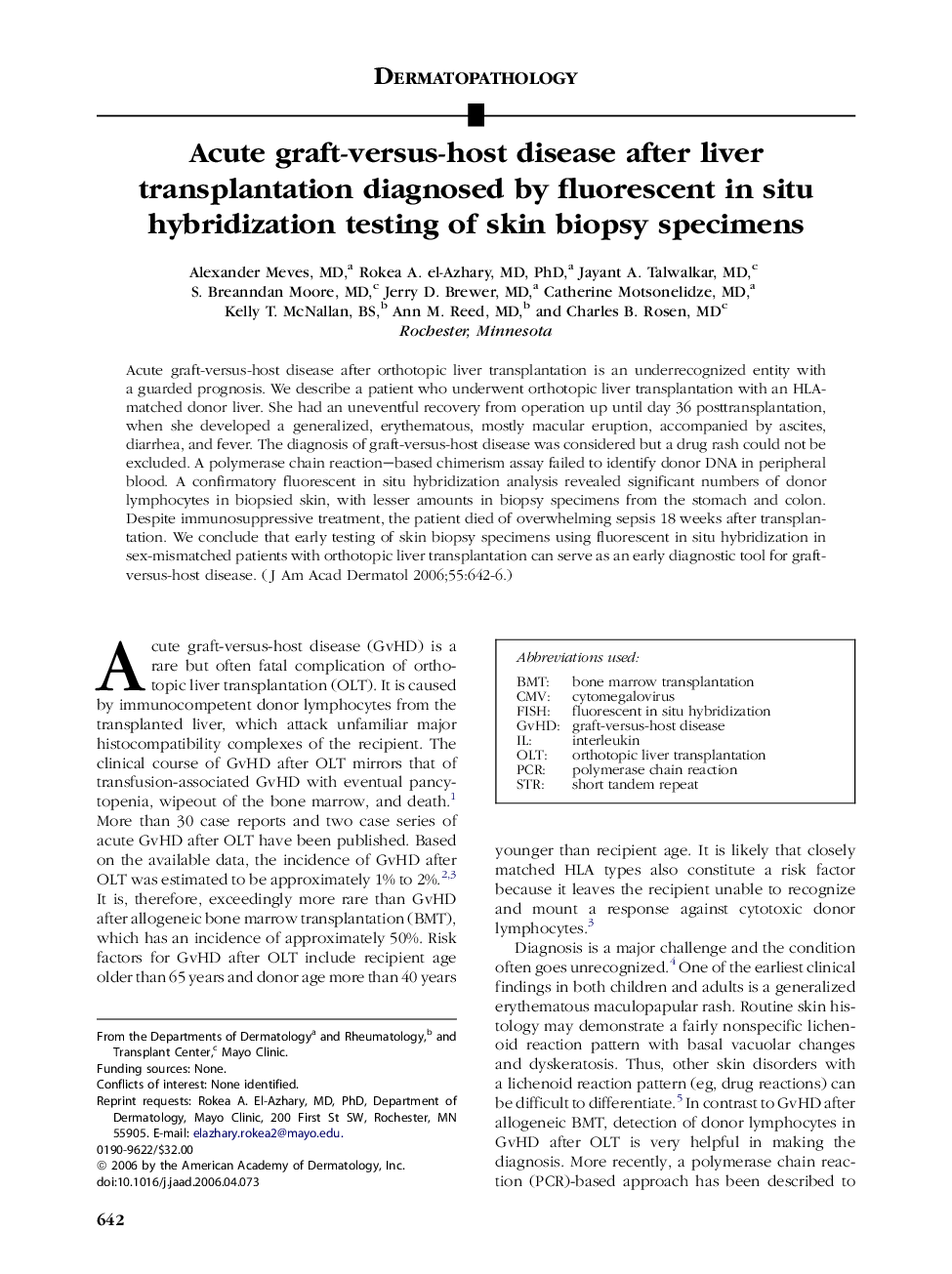| Article ID | Journal | Published Year | Pages | File Type |
|---|---|---|---|---|
| 3211102 | Journal of the American Academy of Dermatology | 2006 | 5 Pages |
Acute graft-versus-host disease after orthotopic liver transplantation is an underrecognized entity with a guarded prognosis. We describe a patient who underwent orthotopic liver transplantation with an HLA-matched donor liver. She had an uneventful recovery from operation up until day 36 posttransplantation, when she developed a generalized, erythematous, mostly macular eruption, accompanied by ascites, diarrhea, and fever. The diagnosis of graft-versus-host disease was considered but a drug rash could not be excluded. A polymerase chain reaction–based chimerism assay failed to identify donor DNA in peripheral blood. A confirmatory fluorescent in situ hybridization analysis revealed significant numbers of donor lymphocytes in biopsied skin, with lesser amounts in biopsy specimens from the stomach and colon. Despite immunosuppressive treatment, the patient died of overwhelming sepsis 18 weeks after transplantation. We conclude that early testing of skin biopsy specimens using fluorescent in situ hybridization in sex-mismatched patients with orthotopic liver transplantation can serve as an early diagnostic tool for graft-versus-host disease.
